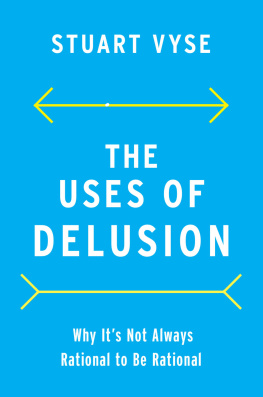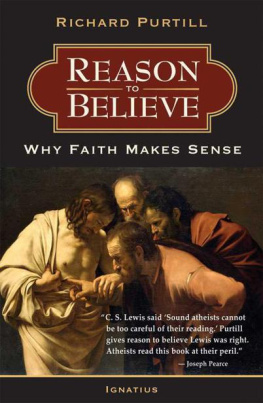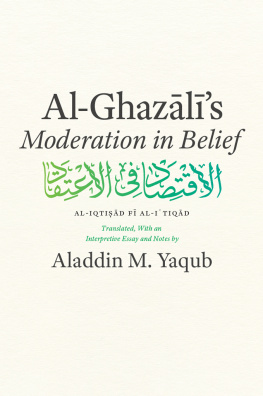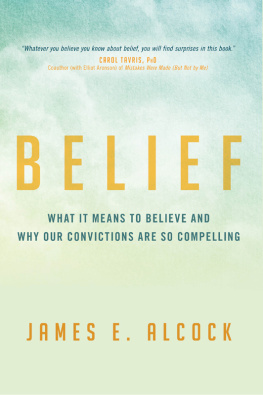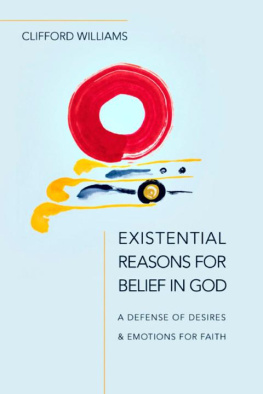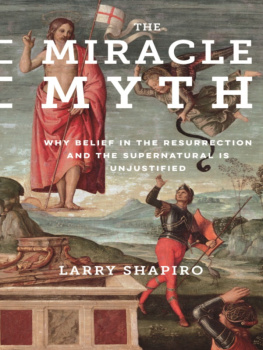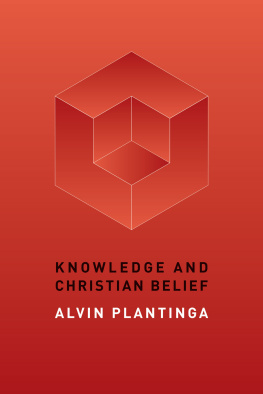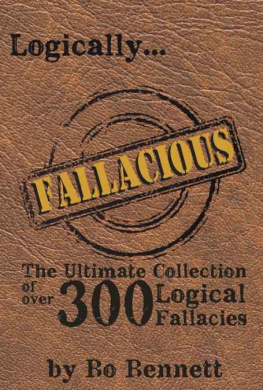
Christensen, David , Department of Philosophy, University of Vermont
Putting Logic in its Place
Formal Constraints on Rational Belief
Publication date 2004 (this edition)
Print ISBN-10: 0-19-926325-6
Print ISBN-13: 978-0-19-926325-7
doi:10.1093/0199263256.001.0001
Abstract: Are rational beliefs constrained by formal logic? This book argues that if beliefs are seen in a binary way (either one believes a proposition or one doesn't), then the standard constraints of 'deductive cogency' (i.e. deductive consistency and deductive closure) are incompatible with epistemic rationality. If, however, beliefs are seen as graded, or coming in degrees, a probabilistic constraint (based on standard logic) is imposed by ideal rationality. This constraint, probabilistic coherence, explains both the appeal of the standard deductive constraints and the power of deductive arguments. Moreover, it can be defended without taking degrees of belief (as many decision-theoretic philosophers have) to be somehow defined or constituted by preferences. Although probabilistic coherence is humanly unattainable, this does not undermine its normative status as a constraint in a suitably idealized understanding of epistemic rationality.
Keywords: belief,deductive cogency,degrees of belief,epistemic,idealization,logic,preferences,probabilistic coherence,probability,rationality
PUTTING LOGIC IN ITS PLACE
end p.i
end p.ii
Putting Logic in its Place
Formal Constraints on Rational Belief
University of Vermont
Clarendon Press . Oxford
end p.iii

Great Clarendon Street, Oxford ox2 6 dp
Oxford University Press is a department of the University of Oxford.
It furthers the University's objective of excellence in research, scholarship,
and education by publishing worldwide in
Oxford New York
Auckland Cape Town Dar es Salaam Hong Kong Karachi Kuala Lumpur
Madrid Melbourne Mexico City Nairobi New Delhi Taipei Toronto
Shanghai
With offices in
Argentina Austria Brazil Chile Czech Republic France Greece
Guatermala Hungary Italy Japan South Korea Poland Portugal
Singapore Switzerland Thailand Turkey Ukraine Vietnam
Published in the United States
by Oxford University Press Inc., New York
David Phiroze Christensen 2004
The moral rights of the author have been asserted
Database right Oxford University Press (maker)
First published 2004
All rights reserved. No part of this publication may be reproduced,
stored in a retrieval system, or transmitted, in any form or by any means,
without the prior permission in writing of Oxford University Press,
or as expressly permitted by law, or under terms agreed with the appropriate
reprographics rights organization. Enquiries concerning reproduction
outside the scope of the above should be sent to the Rights Department,
Oxford University Press, at the address above
You must not circulate this book in any other binding or cover
and you must impose this same condition on any acquirer
British Library Cataloguing in Publication Data
Data available
Library of Congress Cataloging in Publication Data
Data available
ISBN 0-19-926325-6
1 3 5 7 9 10 8 6 4 2
Typeset by Kolam Information Services Pvt. Ltd, Pondicherry, India
Printed in Great Britain
on acid-free paper by
Biddles Ltd, King's Lynn, Norfolk
end p.iv
For my parents,
Roshan Bharucha Christensen
and
James Roger Christensen
end p.v
end p.vi
PREFACE
W hen people talk informally about belief, "rational" and "logical" are often used almost synonymously. And even those who think carefully and precisely about rational belief often take logic to play an important role in determining which beliefs are rational. Explaining the importance of logic to students, philosophers often say things like, "Rational beliefs must be logically consistent with one another," or "If you believe the premises of a valid argument, then, if you are rational, you must believe the conclusion." This book aims to show that logic does indeed play an important role in characterizing ideally rational belief, but that its role is quite different from what it is often assumed to be.
The first chapter sets up parameters for the book's approach: it will focus on epistemic (rather than pragmatic) rationality; it will look at conditions on simultaneous rational beliefs (rather than on rational changes of belief); and it will concentrate on global rationality conditions for an agent's whole system of beliefs (rather than on local conditions for the rationality of particular beliefs). These choices are designed to focus the inquiry where formal logic is most likely to be useful in characterizing ideal rationality.
The second chapter ties the book's central question to a choice between two basic conceptions of belief. The standard binary model sees belief as an all-or-nothing state: either you believe P, or you don't. The graded model sees belief as coming in degrees. The two conceptions invite very different formal rationality conditions. Rational binary beliefs are often held to be subject to deductive cogency, which requires that an agent's beliefs form a logically consistent set which includes all the logical consequences of what the agent believes. Graded beliefs are often held to be subject to
end p.vii
probabilistic coherence: the requirement that they obey the axioms of probability theory. Chapter 2 argues that probability theory is best seen not as a new logic for graded belief, but as a way of applying standard deductive logic to graded belief. It explores different ways of understanding the relation between binary and graded belief, concluding that the way one sees this relation has important implications for the questions of whether and how beliefs are subject to formal rationality constraints.
The third and fourth chapters argue that ideally rational binary belief is not subject to deductive cogency. Chapter 3 begins with the "Preface Paradox," which poses a well-known challenge to deductive cogency requirements. The chapter examines and rejects attempts to avoid the problem by understanding cogency requirements in weakened ways. It then develops an extended version of a preface case which shows how the intuitively irrational beliefs required by deductive cogency will in certain cases cascade into massive irrationality. This highlights the problem's severity and illuminates what's absurd about the beliefs required by deductive cogency. The chapter then shows that situations with Preface Paradox structure occur commonly in ordinary life. Finally, it examines and rejects attempts to defend deductive constraints by explaining away our troublesome intuitions in preface cases and in related cases involving the "Lottery Paradox."
Chapter 4 takes on a deeper sort of response to preface and lottery cases. It has been argued that the fundamental purposes of binary belief require deductive cogency. The chapter examines and rejects several arguments of this sort, the strongest being that if deductive cogency were not rationally required, deductive arguments would have no rational force. The chapter develops and defends an alternative explanation of the epistemic importance of deductive arguments, rooted in a probabilistic coherence constraint on graded belief, and in the relation that rational binary belief would bear to rational graded belief on any plausible account. The chapter ends with a discussion of whether binary belief has any epistemic importance; it argues that although our binary way of



